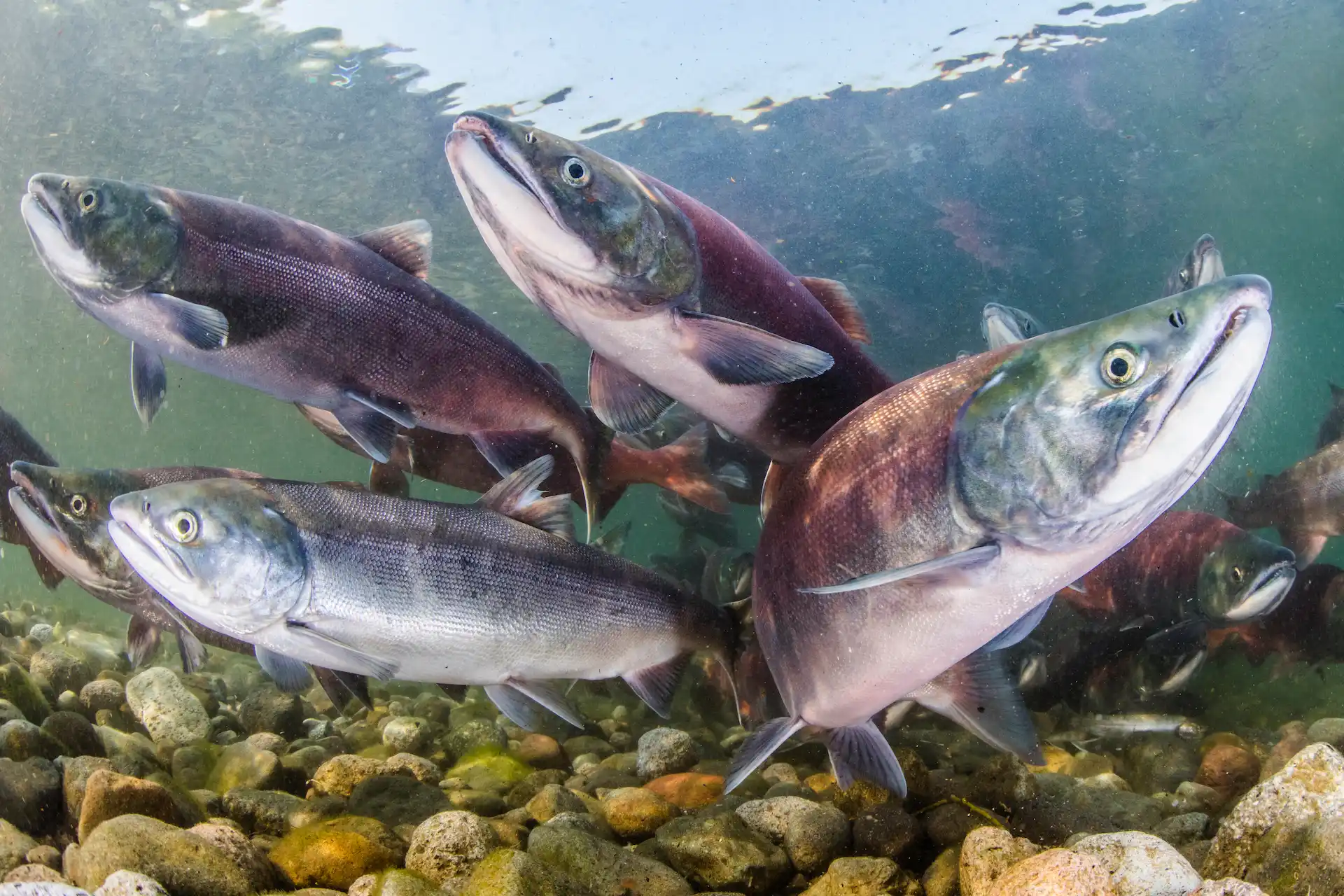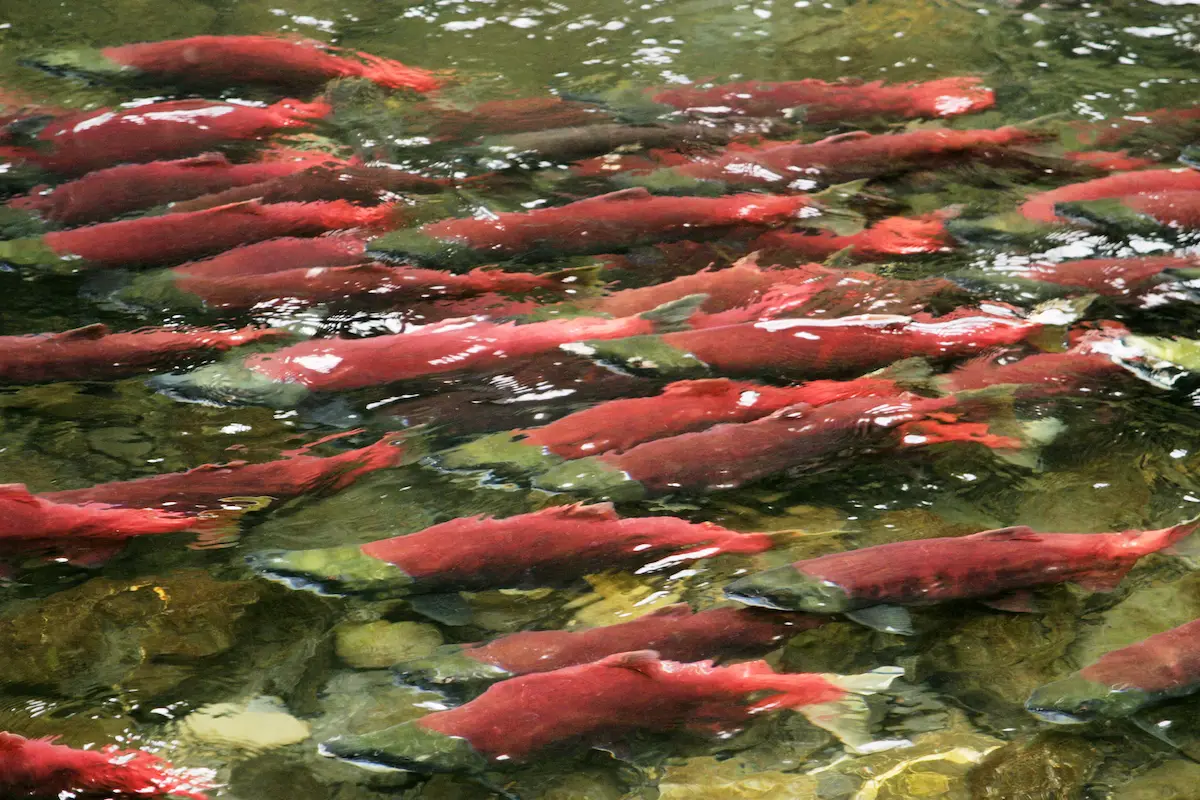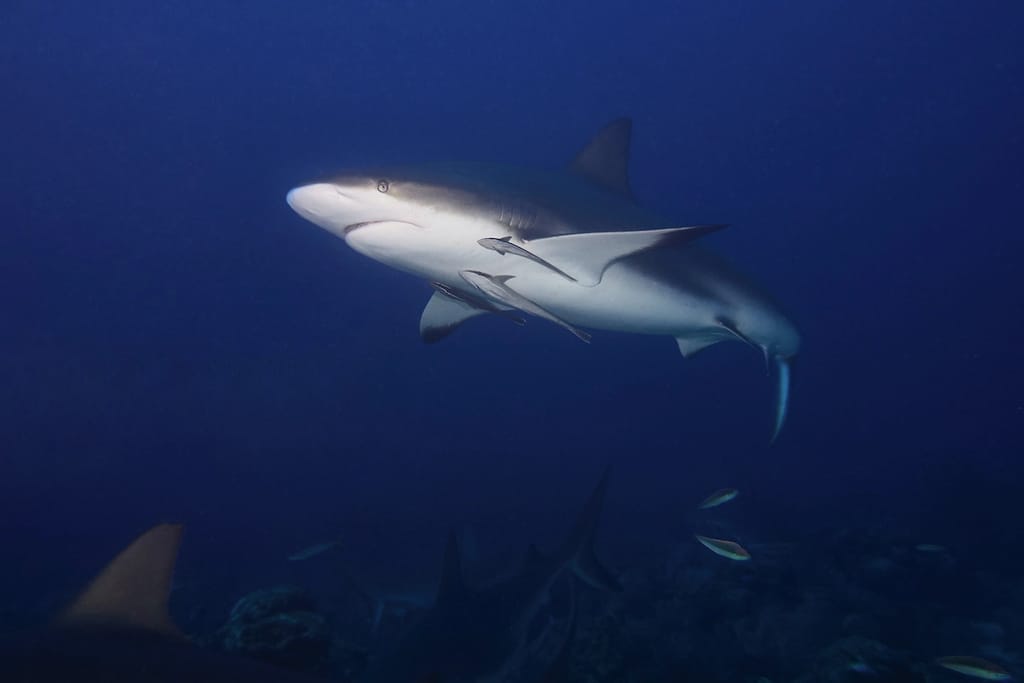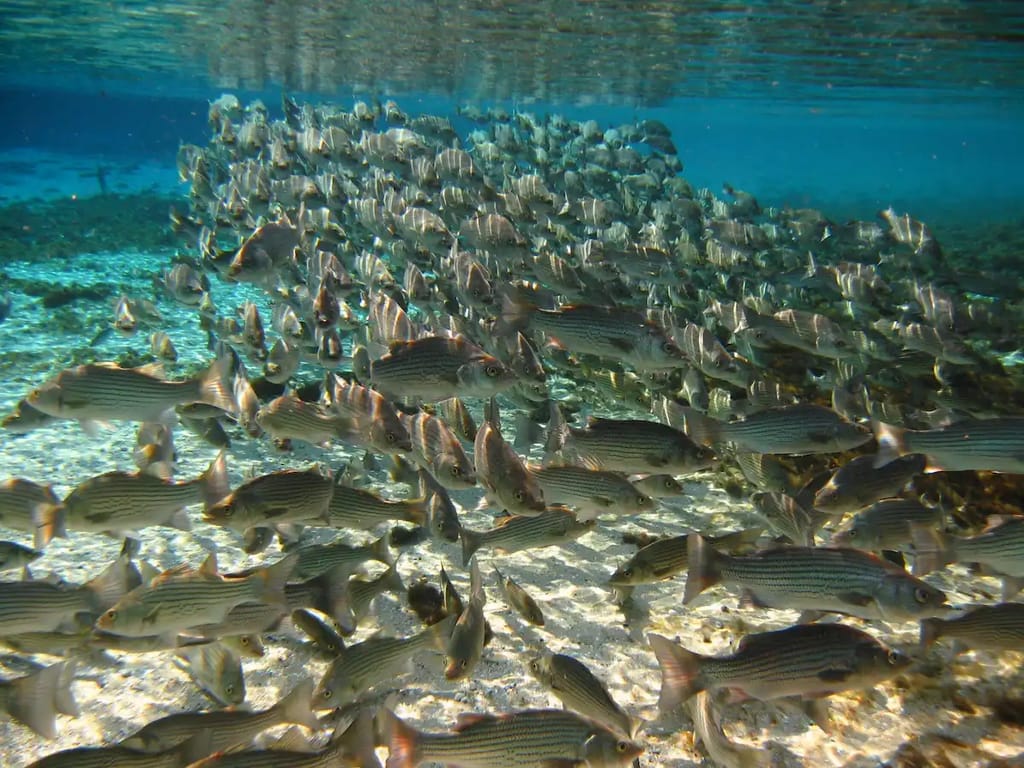Fish That Live in Saltwater and Freshwater
Dive into diadromy

Growing up on New York’s Long Island near the beach, I discovered at a very young age that ocean water is salty! I learned the hard way on a hot summer day after taking a big gulp. Although humans can’t drink ocean water, it sustains some amazing marine life beneath the waves. As I got older, I was taught about the creatures living in our freshwater lakes and rivers. Our inland water systems support lots of life, too.
Get Ocean Updates in Your Inbox
Sign up with your email and never miss an update.
So, land dwellers, did you know there is one type of species, called diadromous (a word of Greek origin that means “running across”), that can live in both freshwater AND saltwater?
Get ready to learn a few more new words, like euryhaline and osmoregulation, as we dive into four fish that not only survive but thrive in both environments.
Salmon

While all the species described here are diadromous, there are two categories: anadromous (running upward) and catadromous (running downward—as you will read about later). Salmon, among others, are anadromous. That means they hatch in freshwater and then migrate out into the ocean to mature. Once grown, they travel back again to freshwater breeding grounds—the difficult “upstream journeys” they are well known for.
Salmon support many different animals, from bears to birds, that rely on them for food as they make their way upstream. Making multiple freshwater-saltwater transitions is rigorous, and salmon species have evolved complex strategies that help them adjust between different aquatic habitats. This is done through osmoregulation, the process of maintaining an internal fluid balance in organisms. Salmon can regulate their bodies to keep their internal concentration of salt and water consistent as they travel, an adaptation that allows for their unique migratory patterns.
American Eels

American eels are catadromous—they are born in saltwater and then spend most of their lives in rivers, migrating downstream to the sea to spawn. Like the salmon, eels must overcome many obstacles when they migrate back up rivers and streams. Eels are extremely valuable members of their ecosystems due to their symbiotic relationships with other life. For example, in the Chesapeake Bay and Susquehanna River near Ocean Conservancy’s headquarters in Washington D.C., freshwater mussel larvae attach themselves to American eels in their final weeks of gestation. Since mussels continuously filter and clean up to 15 gallons of water a day, eels and mussels work together to keep waters such as these healthy and full of vibrant wildlife.
Bull Sharks

Don’t be afraid of the versatility of the bull shark. This famous predator is euryhaline, which means it can regulate its body to adapt to a wide range of salinities.
The kidneys, gills and specialized rectal glands all work together to help bull sharks retain salt as they enter freshwater. Young bull sharks usually move into freshwater rivers or lakes to protect themselves from being hunted and eaten, but they spend most of their lives in the saltwater of the ocean. The gills have had time to draw in plenty of saltwater, which is stored and then reabsorbed into the bloodstream by the kidneys. They work overtime to flush the freshwater out (as urine) and maintain their internal salinity levels. Many pregnant females have been found in freshwater, suggesting that rivers and estuaries are the perfect “hiding” spot.
Striped Bass

This long-lived species, the striped bass, is native to the Atlantic coastline of North America (from the St. Lawrence River into the Gulf of Mexico). These anadromous fish also embark on quite the journeys to reproduce and are notable for the time they spend in estuaries. After being born in fresh water, they usually remain in these brackish waters for two to four years before heading out to live in the Atlantic Ocean.
The striped bass is a valuable part of the ecosystem. As a high-level predator, this species helps regulate prey populations. As a popular species for fishermen, they generate significant revenue, jobs and sustenance along the way.
While developing characteristics to help themselves survive isn’t a new phenomenon for species in the animal kingdom, the ability to survive in both fresh and saltwater benefits is unique. Diadromous fish play an important ecological role, creating pivotal connections between ecosystems and providing assistance to other species—in lakes and rivers, across brackish watersheds and estuaries, all the way to the open ocean.